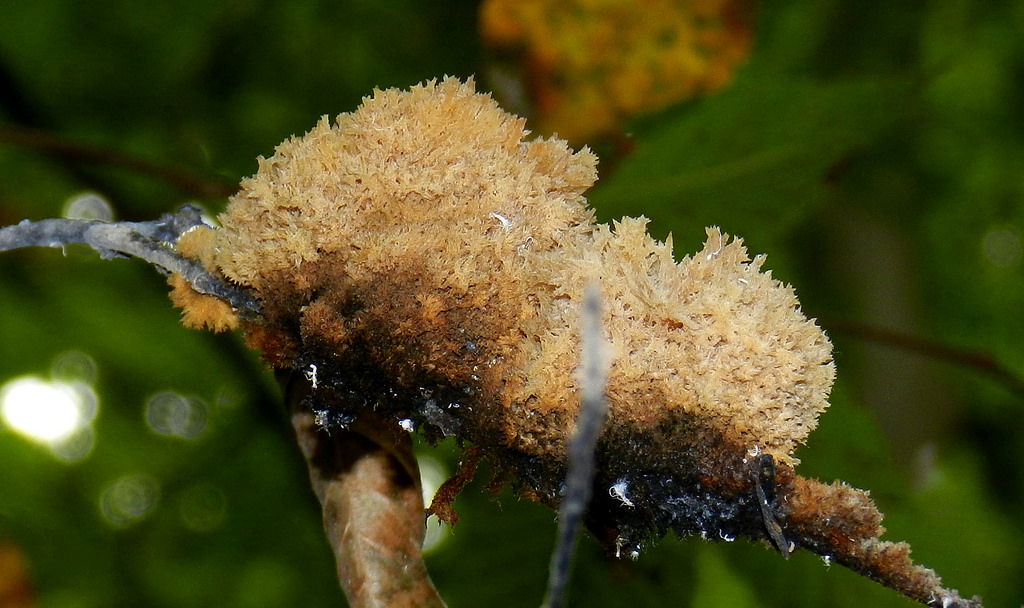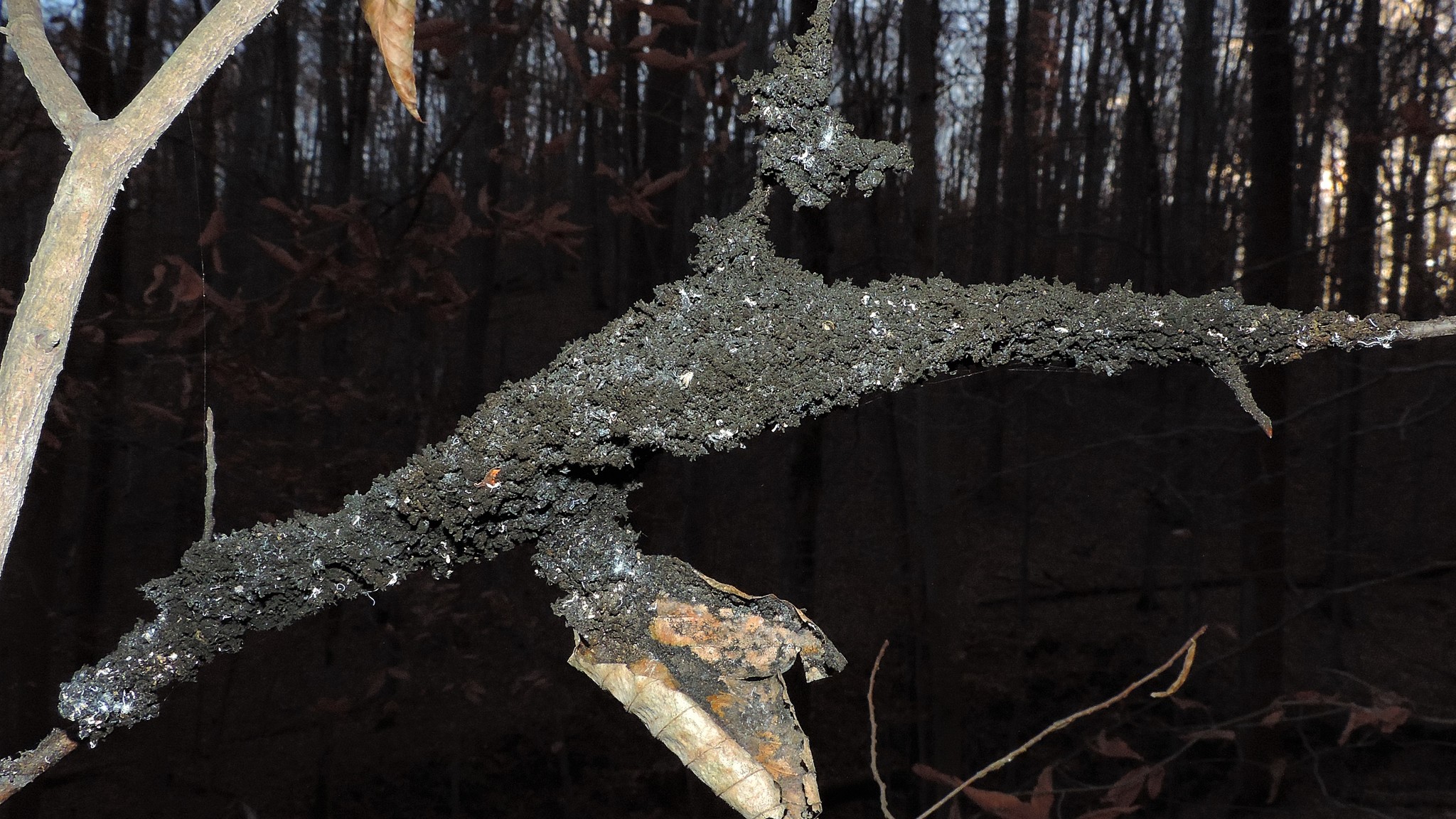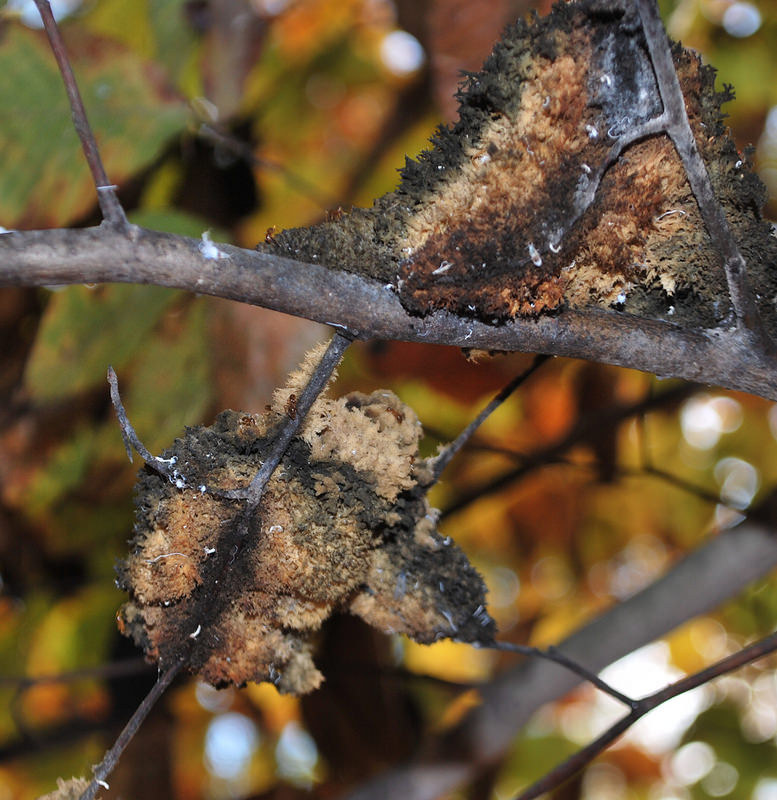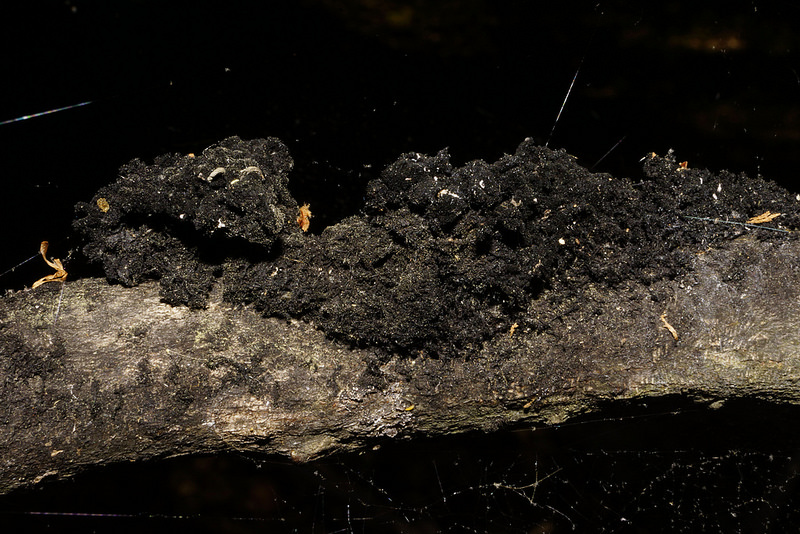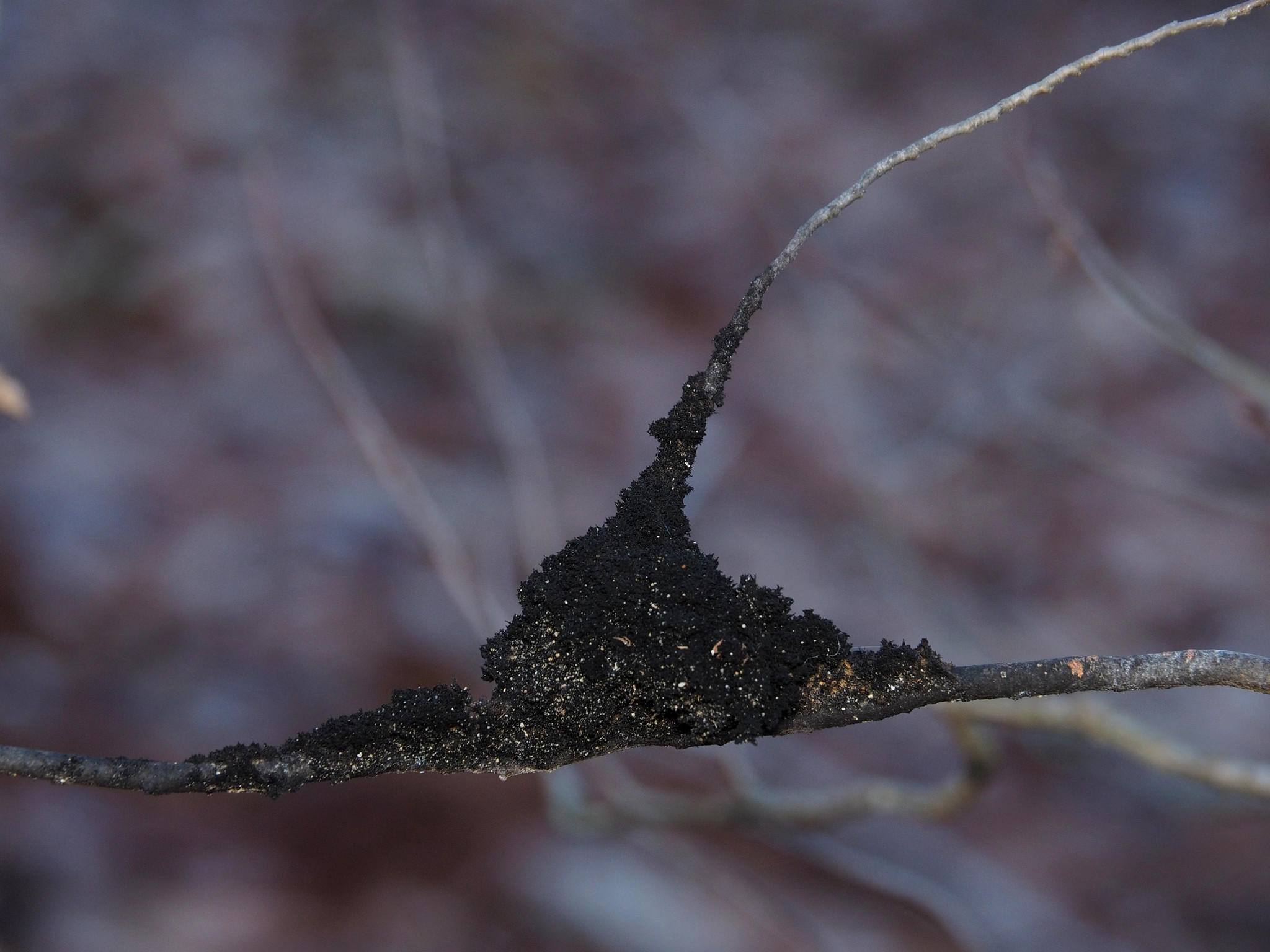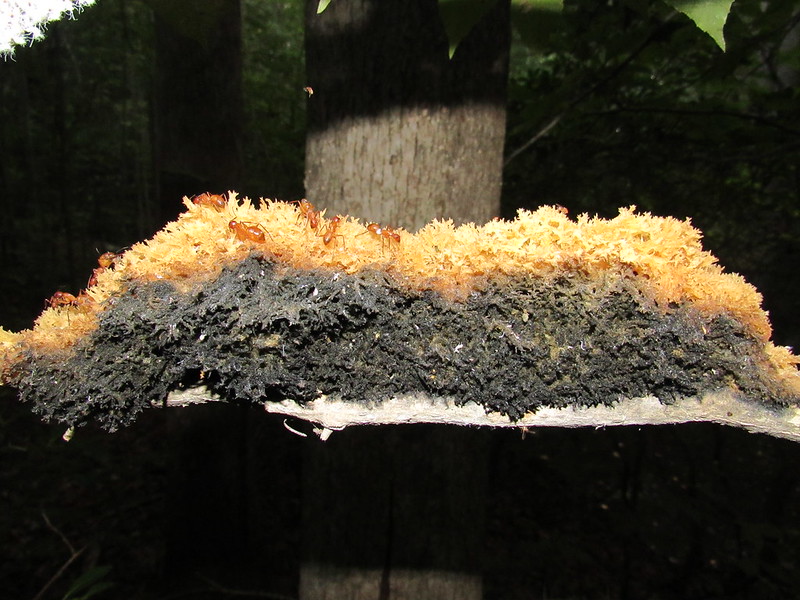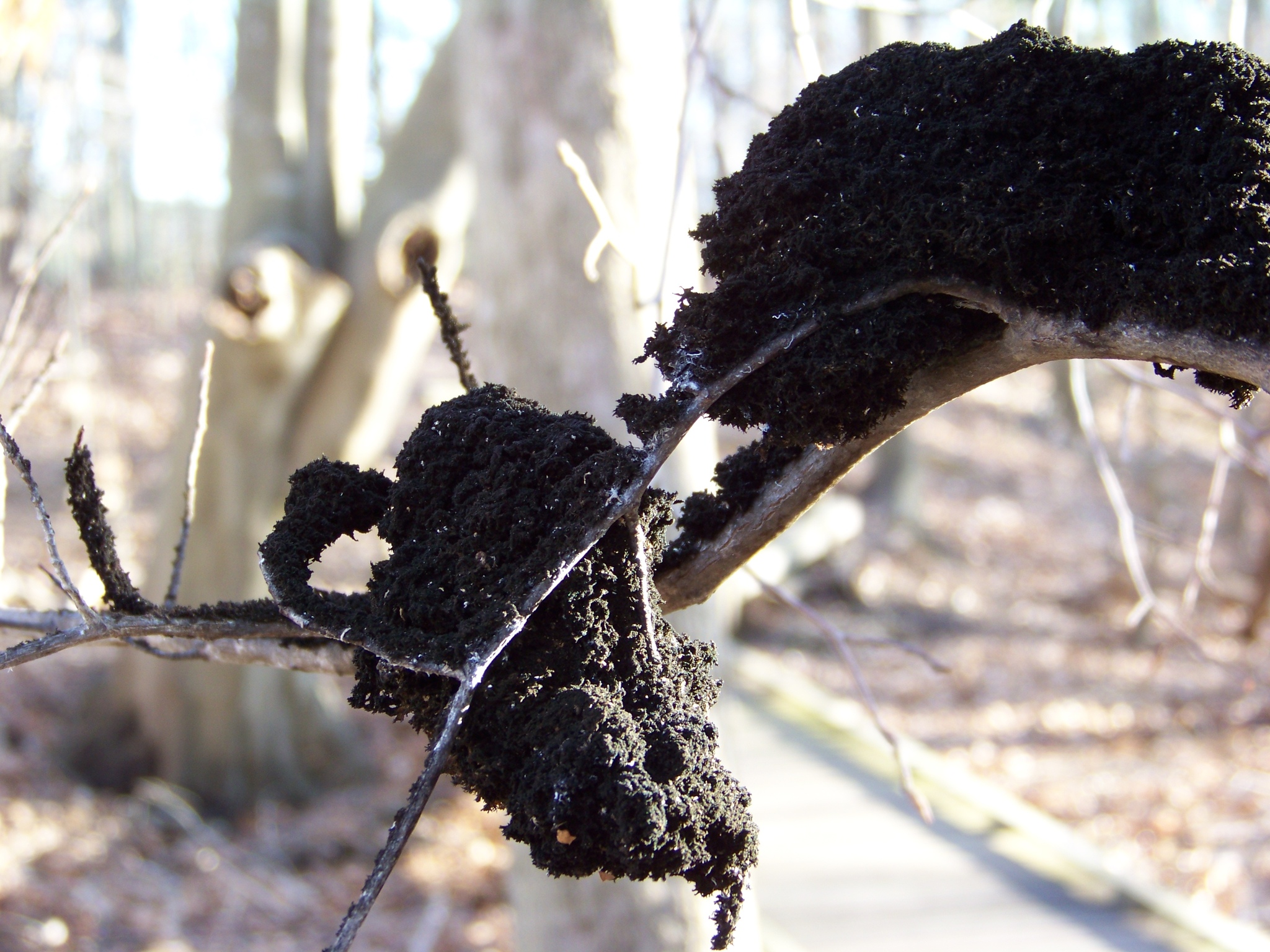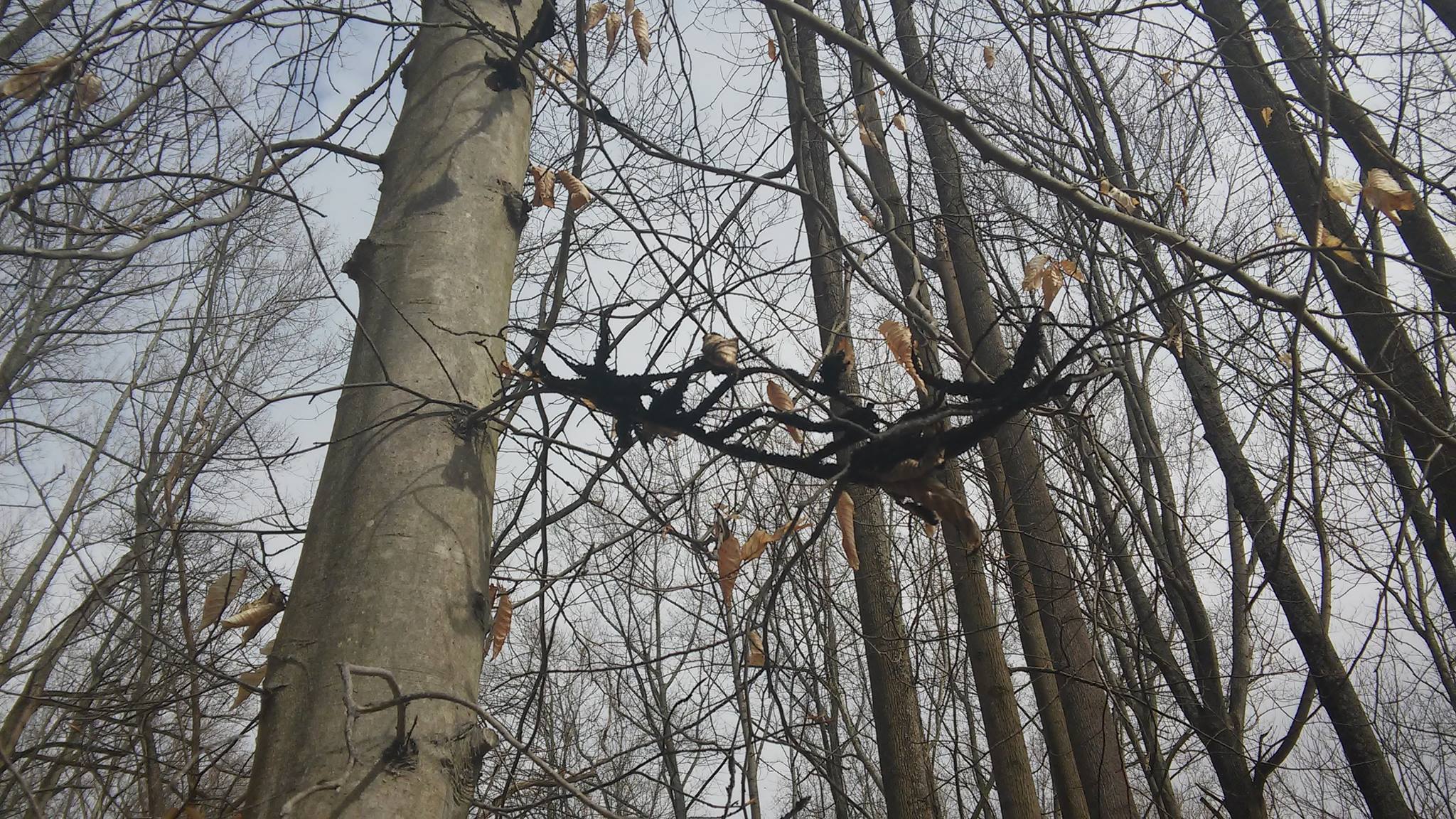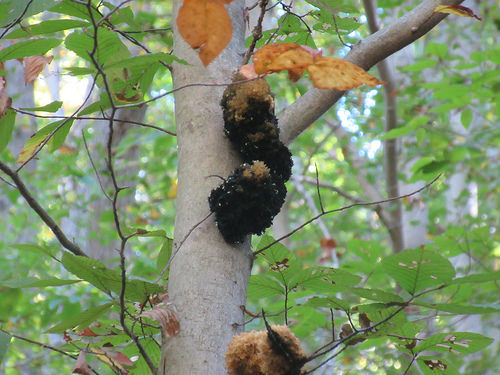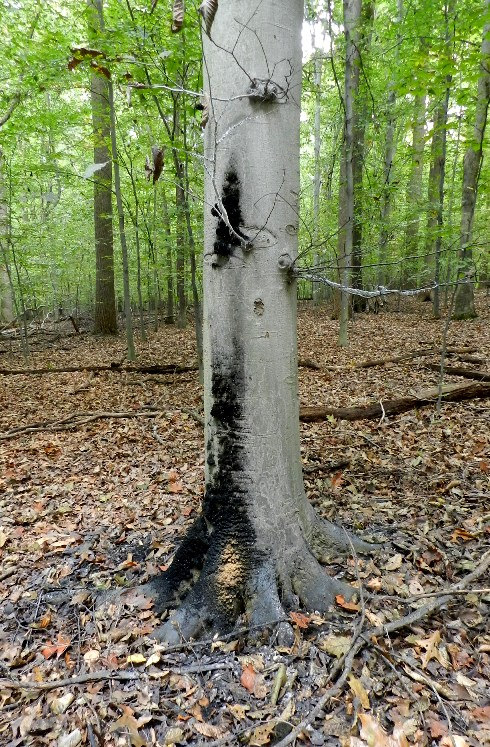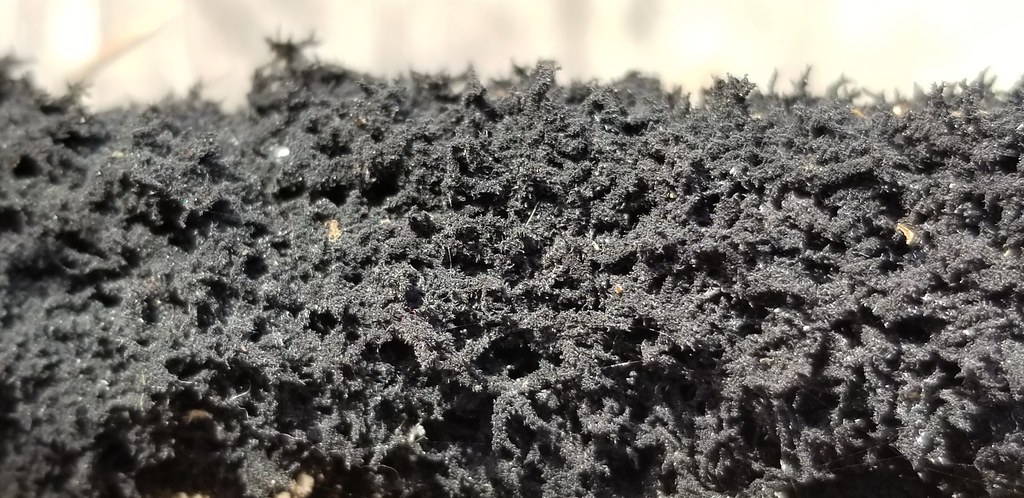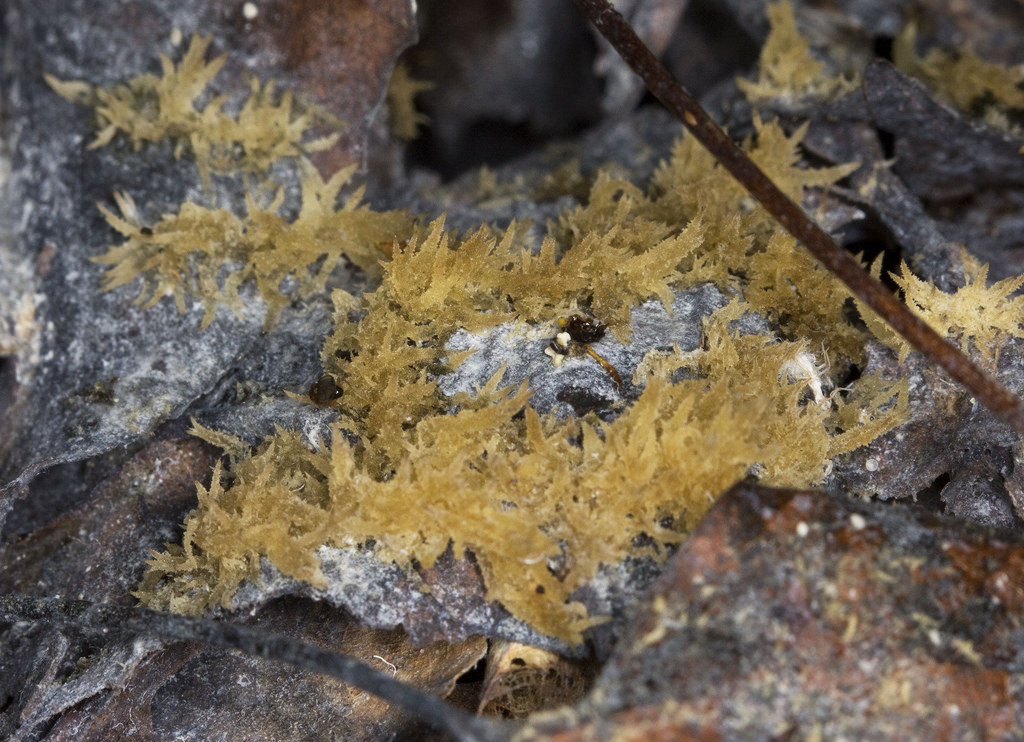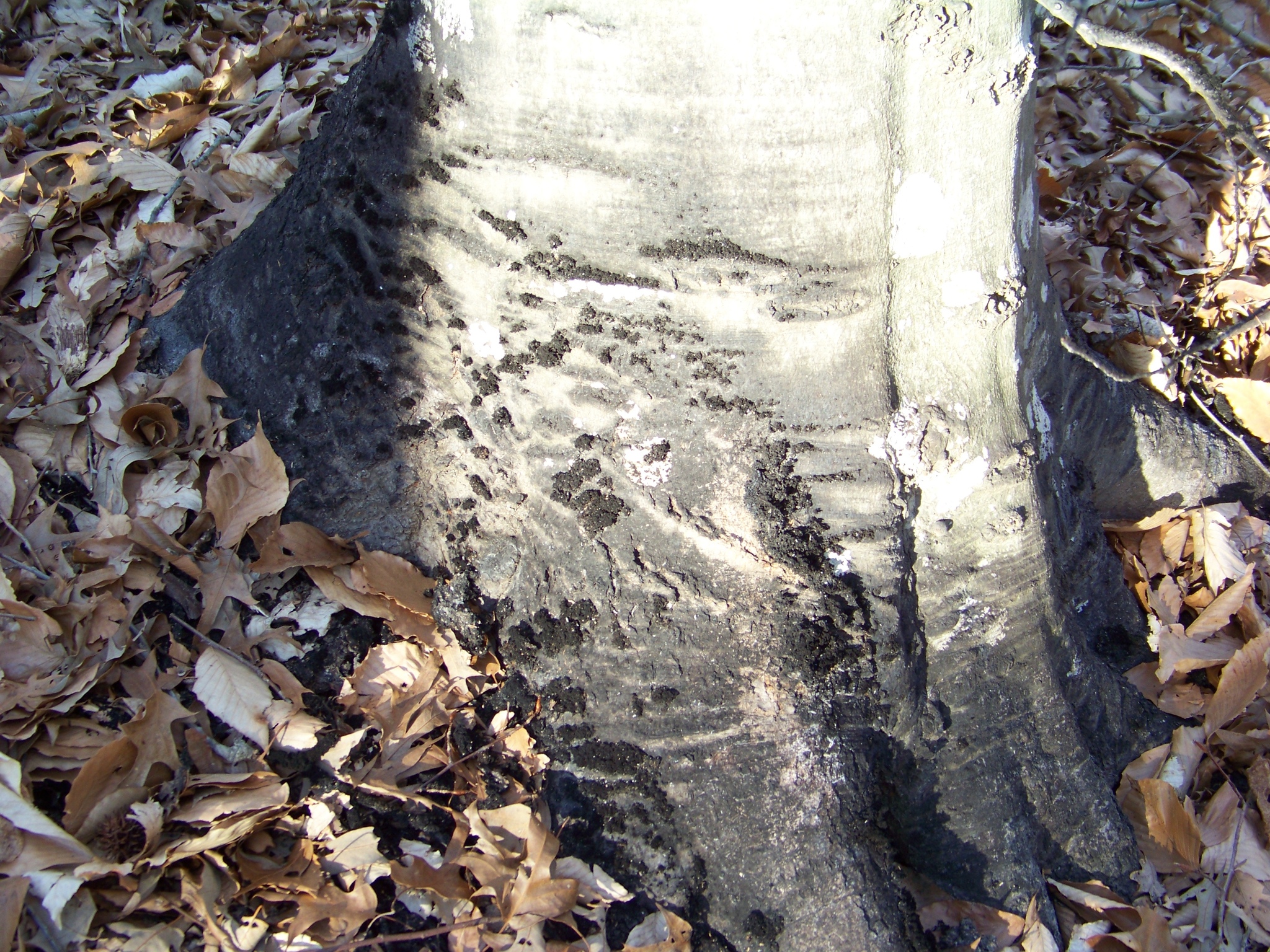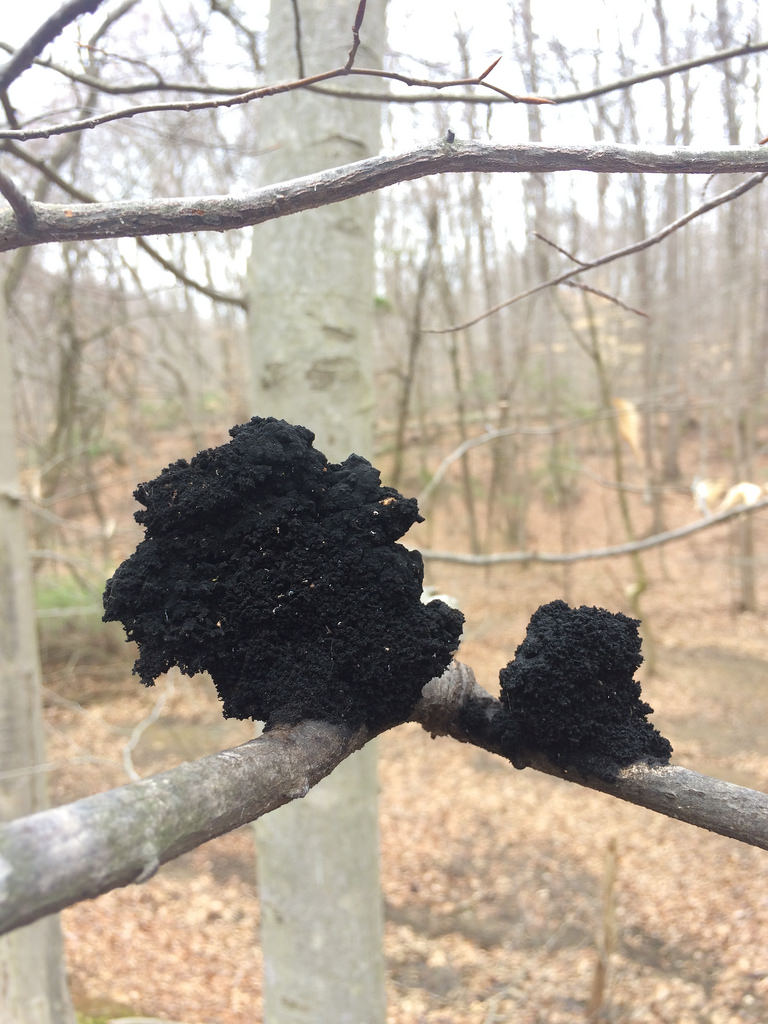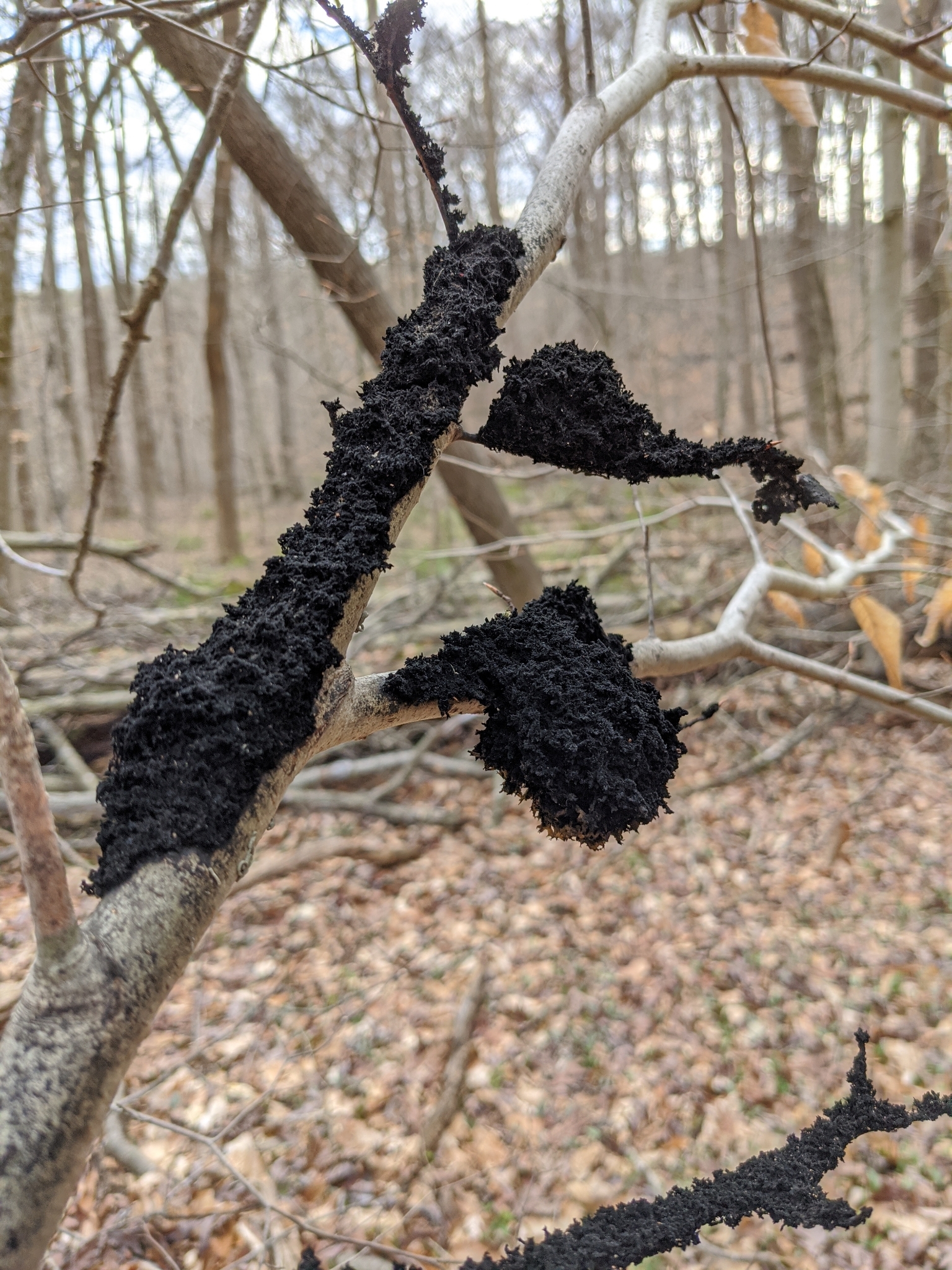

 Synonyms: Sooty Black Mold.
Synonyms: Sooty Black Mold.



















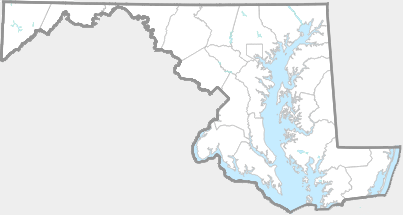
Honeydew Eaters are a kind of sooty mold fungus that grows on concentrations of honeydew secreted by the Beech Blight Aphid (Grylloprociphilus imbricator), which feeds exclusively on American Beech (Fagus grandifolia) trees.
Honeydew Eaters form fungal mats that thicken first into a spongy, golden-yellow mound that may rise 2 or more inches above a leaf or twig surface. Later these masses turn black. They occur anywhere that the honeydew accumulates beneath the aphid colonies, including on leaves and stems of understory plants that are not hosts to the aphids.
On American Beech trees or nearby plants or other surfaces where Beech Blight Aphid honeydew accumulates.
Beech Blight Aphids occur in dense concentrations, in late summer and fall, usually on just a few branches within a beech tree. Their tight packing enables these insects to provide Scorias spongiosa with more nutrition than more solitary aphid species can supply to their fungi, which rely on a single layer of honeydew. Because Honeydew Eater colonies are large and often dark in color, they are easily observable. Sooty molds do not penetrate plant tissue and thus are not parasitic.
There are 276 records in the project database.
| GA | AL | WA | FR | CL | MO | HO | BA | BC | HA | CE | PG | AA | CV | CH | SM | KE | QA | CN | TA | DO | WI | SO | WO |
